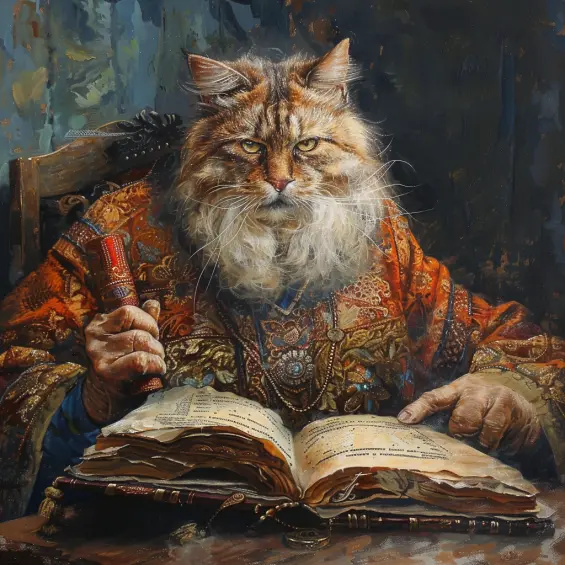Comrades with Claws: The Furry Underbelly of Soviet Russia
- Lena Kloper
- Mar 1, 2024
- 3 min read
Updated: Mar 5, 2024

In the vast, frostbitten expanse of Soviet Russia, where the queues for bread were often longer than those for the latest Lenin speech, there prowled a different kind of comrade – one with fur, whiskers, and an unyielding disdain for capitalist mice. These were the proletarian pets, the feline guardians of the grain, the unsung heroes of the USSR: the cats.
The Great Pawlitariat Revolution

It was during the early days of the revolution that cats first rose to prominence. Lenin himself was rumored to have said, "A revolution without cats is not a revolution worth having." This was, of course, before he discovered his favorite boots had become a casualty to kitten claws. Cats in Soviet Russia were not mere pets; they were the silent sentinels in the war against vermin, tasked with safeguarding the state's grain reserves from capitalist inclined rodents.
The Feline Five-Year Plan

Stalin, ever the strategist, introduced the first Feline Five-Year Plan. The goal was ambitious: to increase mouse capture rates by 200%, thereby ensuring the protection of the people's food. Cats, lauded as heroes of the motherland, were awarded medals of honor – little gold fish on ribbons. However, the plan hit a snag when it was discovered that cats preferred to work at their own pace, leading to the infamous slogan, "Cats of the world, unite! But only if you feel like it."
Khrushchev's Corn Catastrophe

Under Khrushchev, a new policy was introduced to cultivate vast fields of corn, inspired by his visit to the cornfields of Iowa. What was overlooked, however, was the vital role of cats in this agrarian dream. Fields of corn attracted mice, and the cats were overwhelmed. It was reported that Khrushchev lamented, "We will bury the mice in corn!" only to find the cats more interested in burying themselves in sun-drenched spots than in pursuing their rodent adversaries.
The Space Race: The First Catronaut

Not to be outdone by the Americans and their canine cosmonauts, Soviet Russia decided to send the first cat into space. Named Comrade Whiskerski, this brave feline was rigorously trained to press buttons for food and to meow the Soviet anthem. Unfortunately, the mission was aborted when Comrade Whiskerski defected to the American side, lured by promises of endless tuna and capitalist catnip.
The Dissolution of the Soviet Union: The Cats Remain

As the Soviet Union began to unravel, the cats remained a constant. Through perestroika and glasnost, they watched from their windowsills, unbothered by the shifting political landscape. When asked about the fall of the Soviet Union, a renowned Russian cat, now elderly and wise, simply meowed, "I have seen regimes come and go, but a warm lap and a full bowl are eternal."
In Conclusion: The Legacy of Soviet Cats

The history of Soviet Russia is incomplete without acknowledging the contributions of its feline comrades. From their early days bolstering morale and controlling pests to their forays into space diplomacy, cats played a pivotal role in shaping the narrative of the USSR. They were the soft purring heart beneath the steel exterior of the Soviet machine, reminding us that even in the most regimented societies, the independent spirit of a cat will always find a way to leave its mark – sometimes quite literally on official documents.
So, let us raise our glasses (of vodka, presumably) to the comrades with claws, the true unsung heroes of Soviet Russia. Their legacy lives on, a whiskered whisper in the annals of history, a reminder that sometimes the smallest creatures can have the most significant impact.

Comments